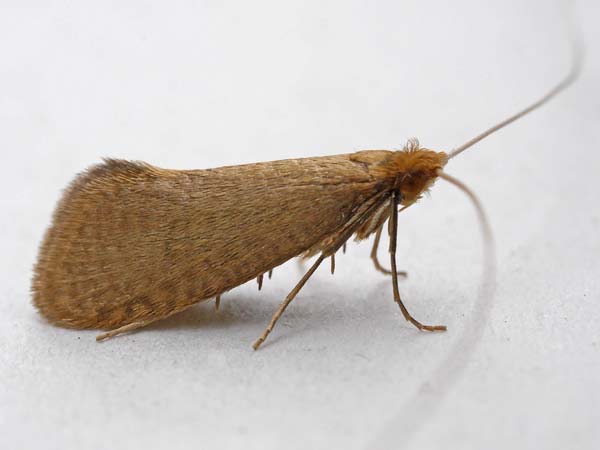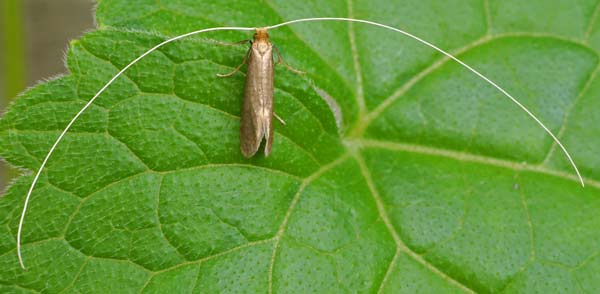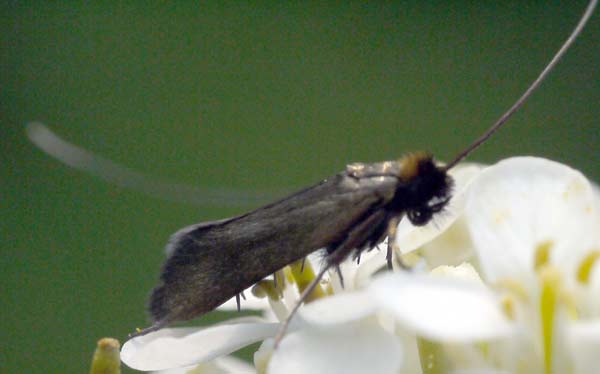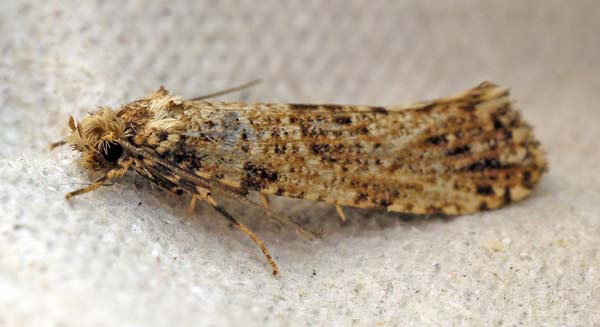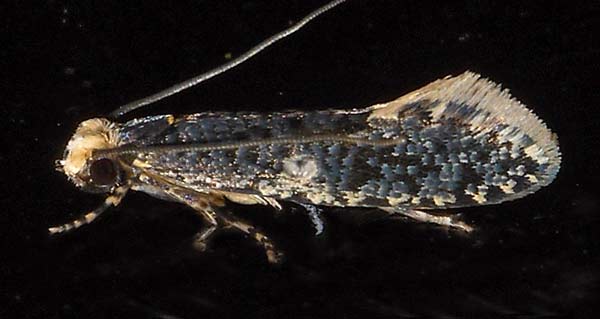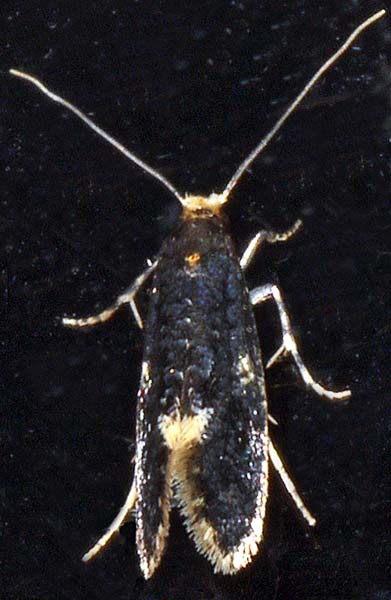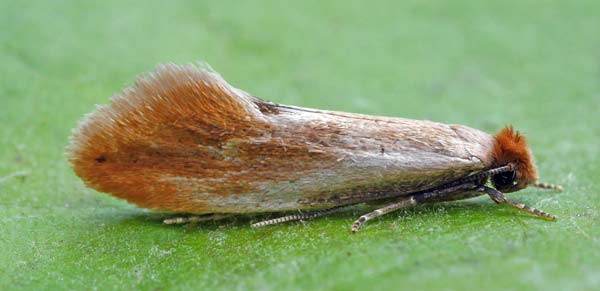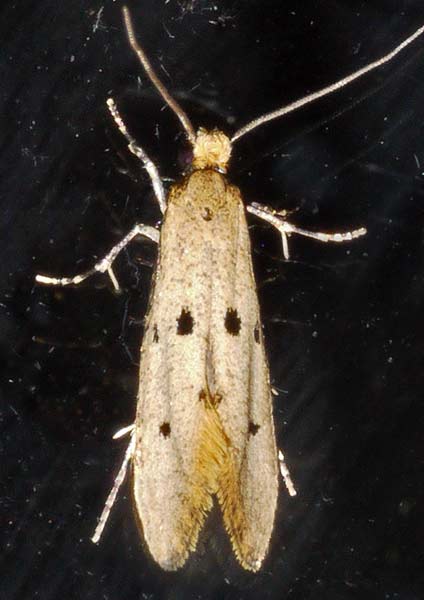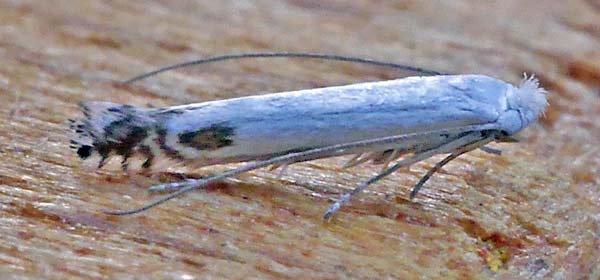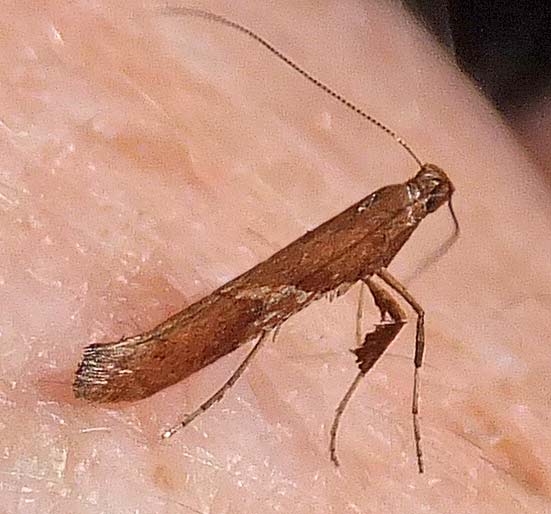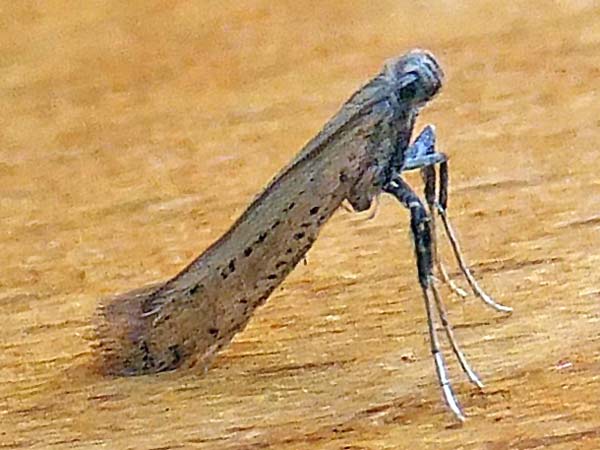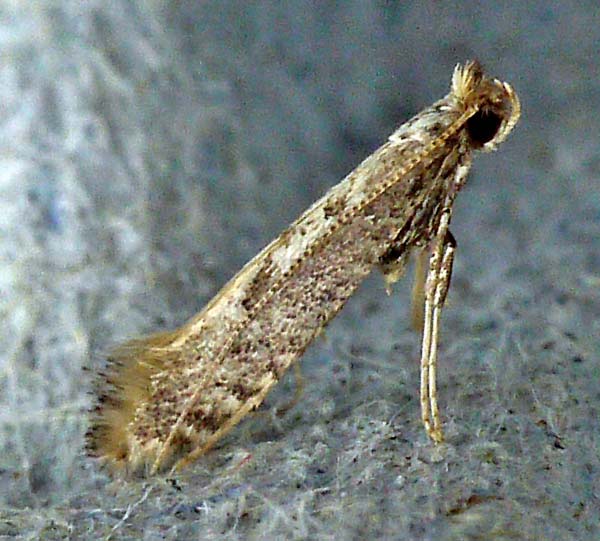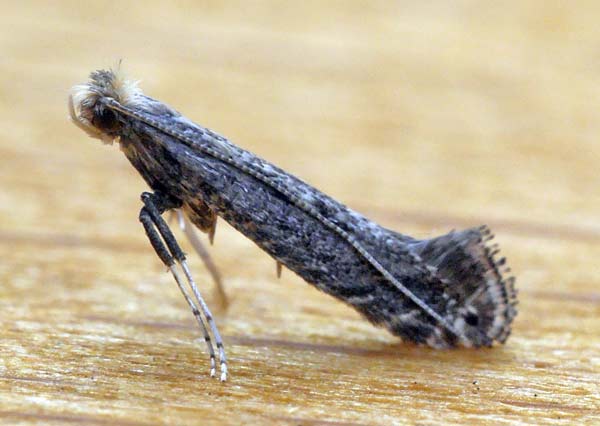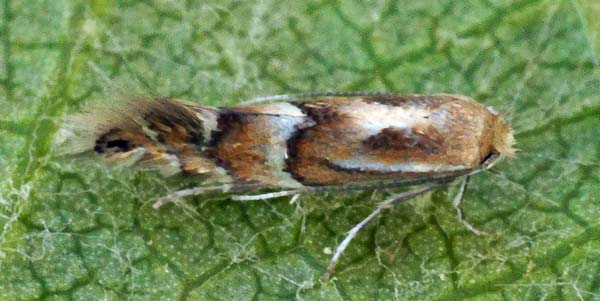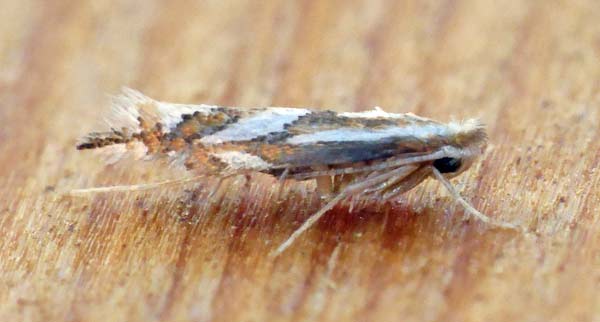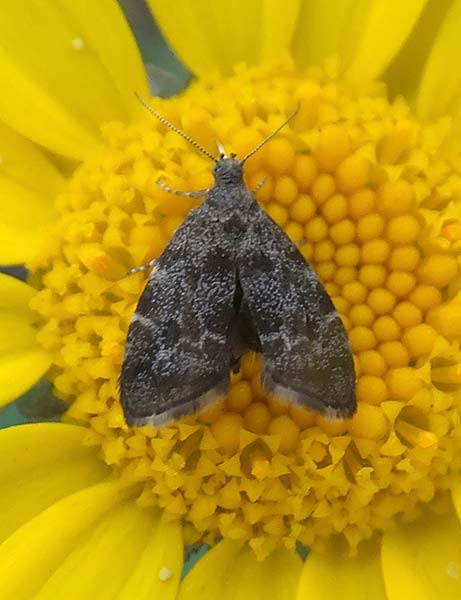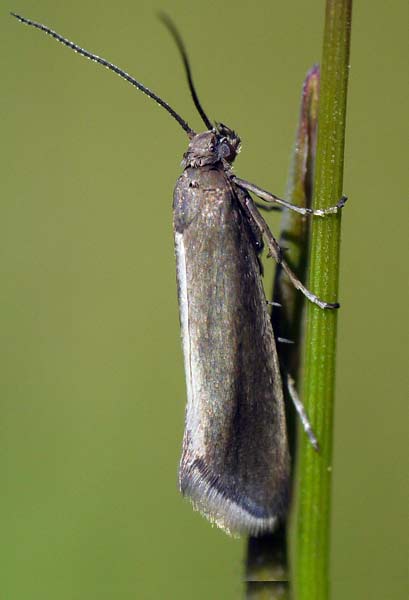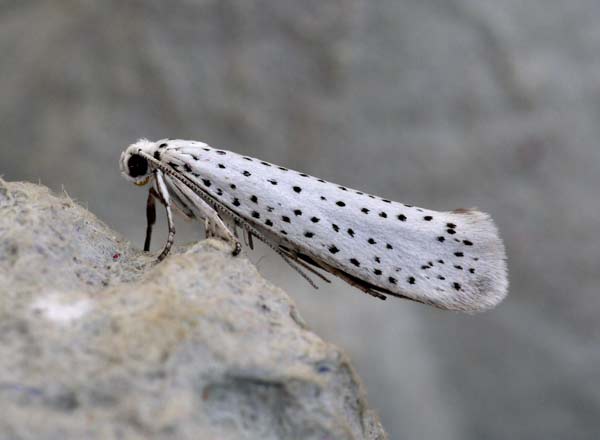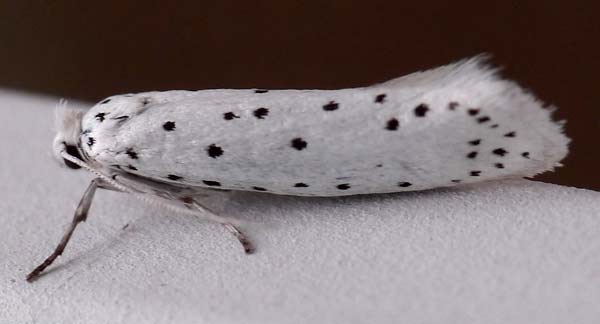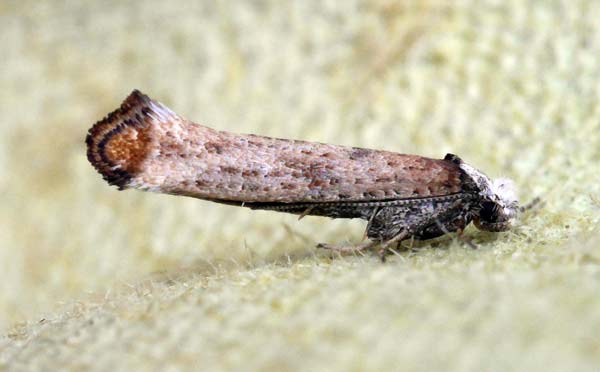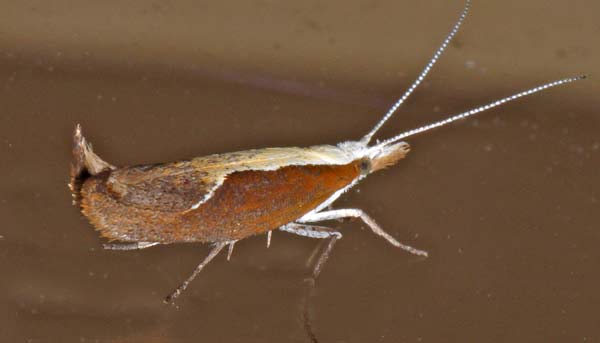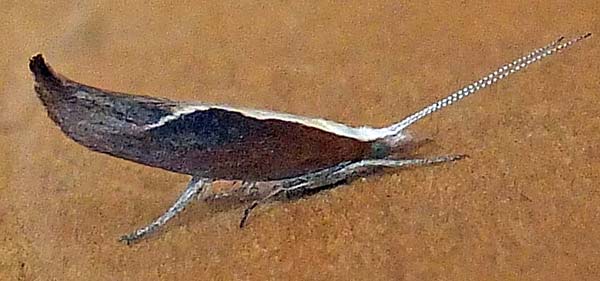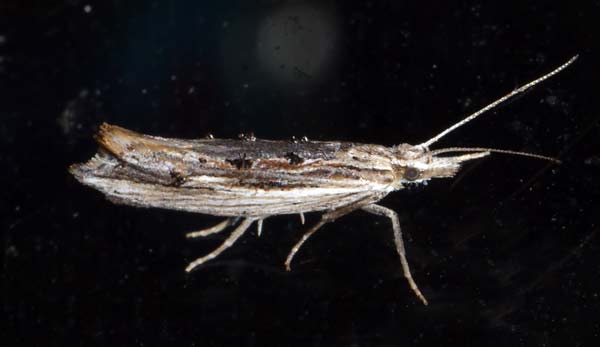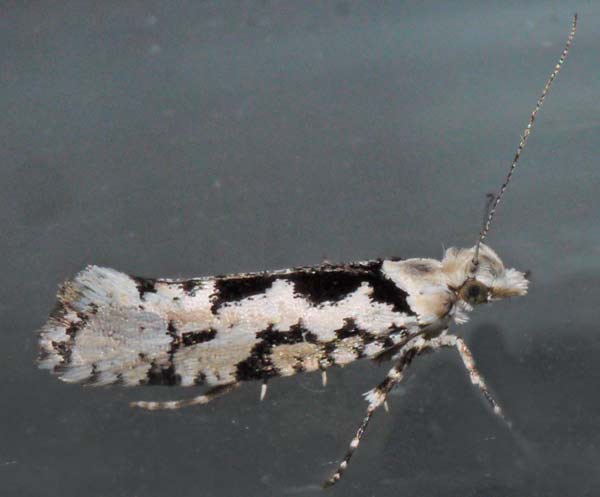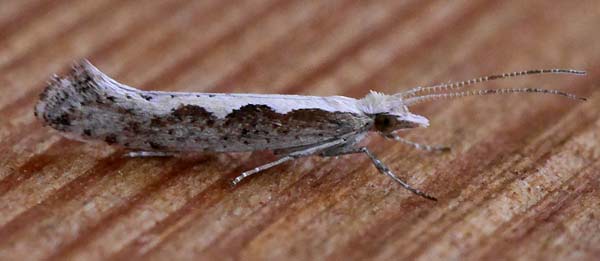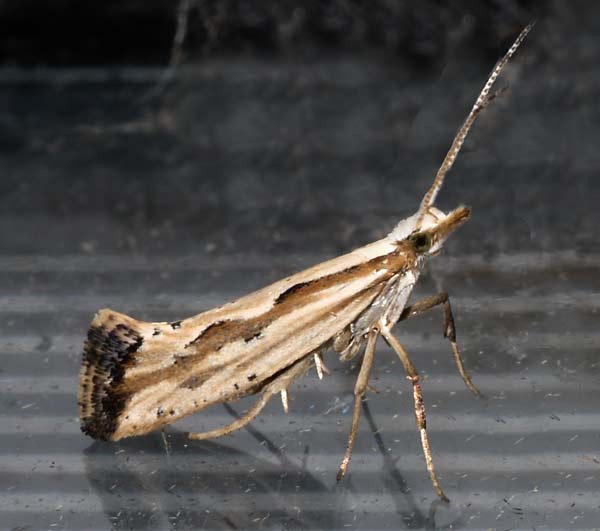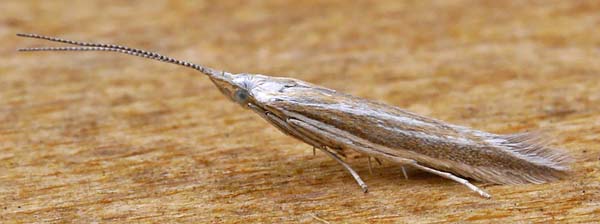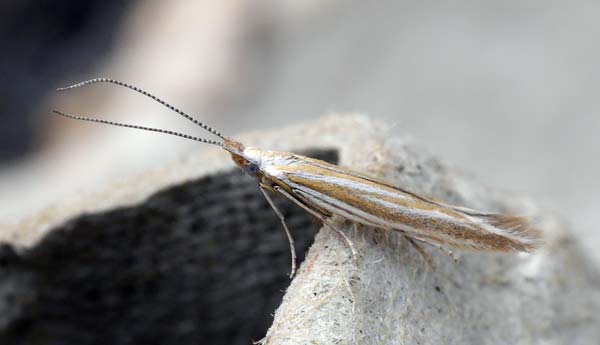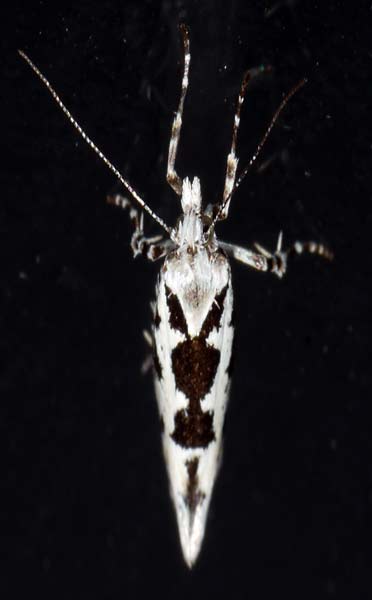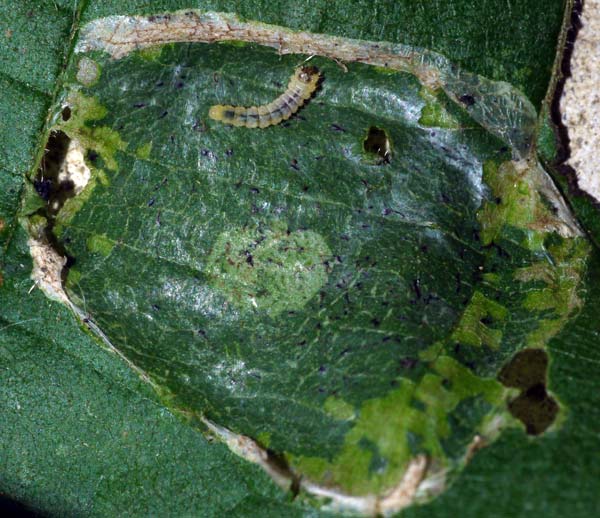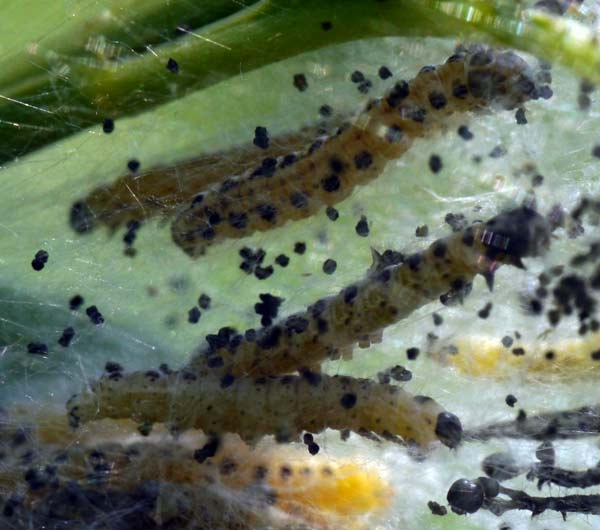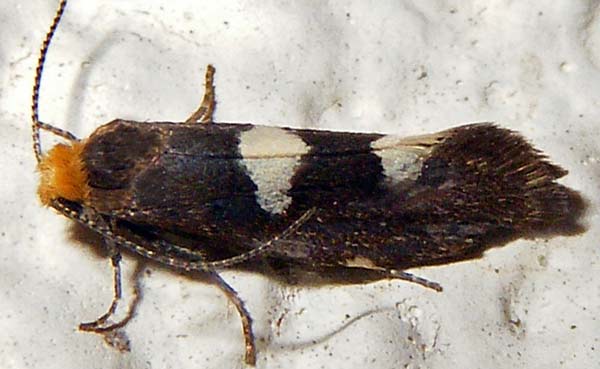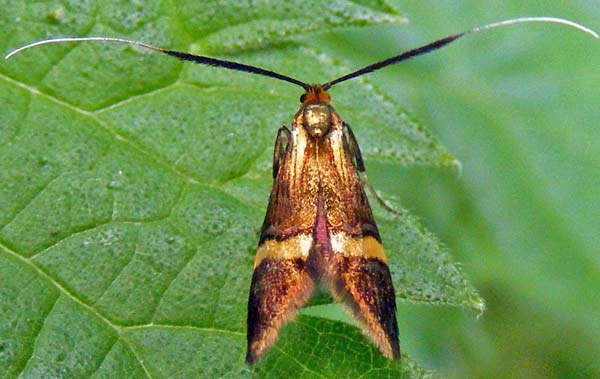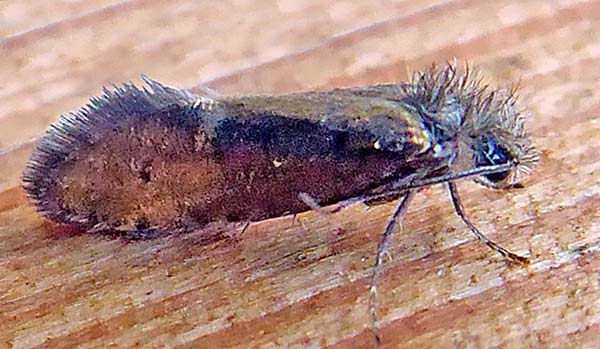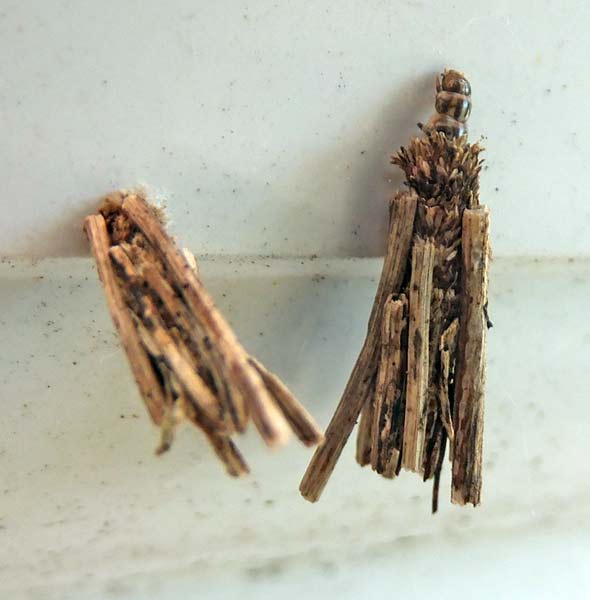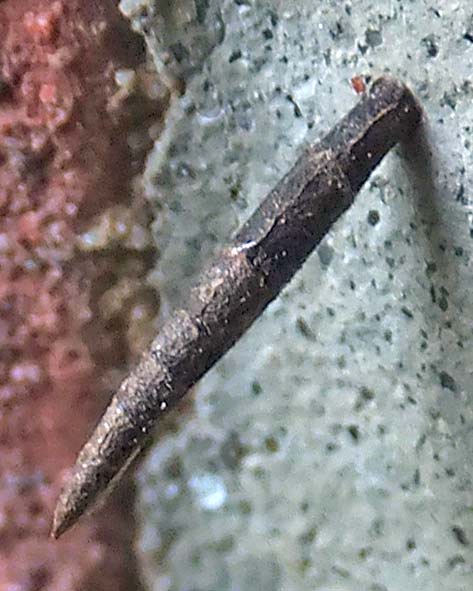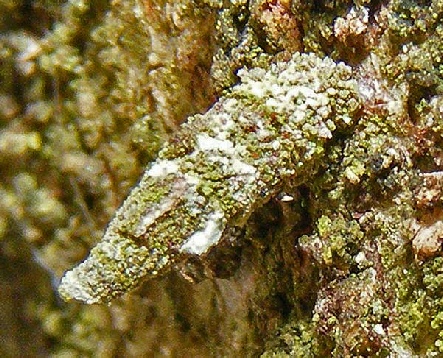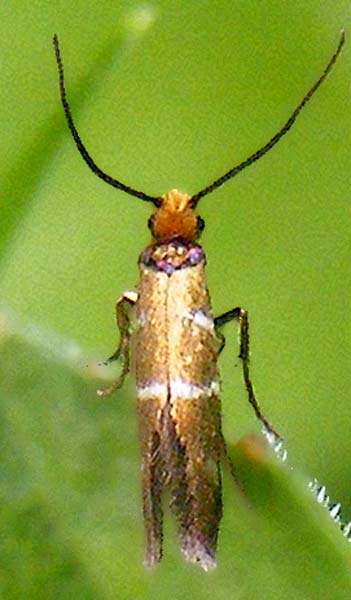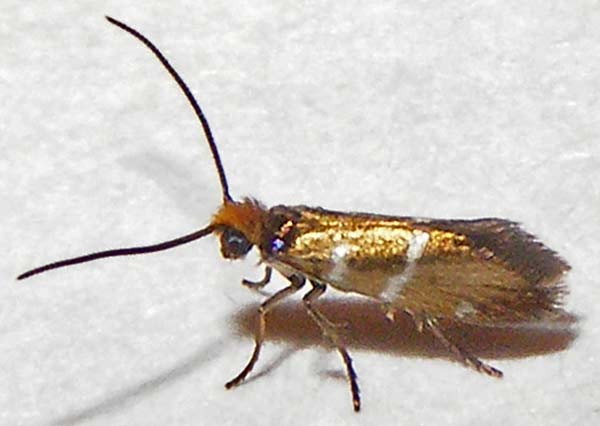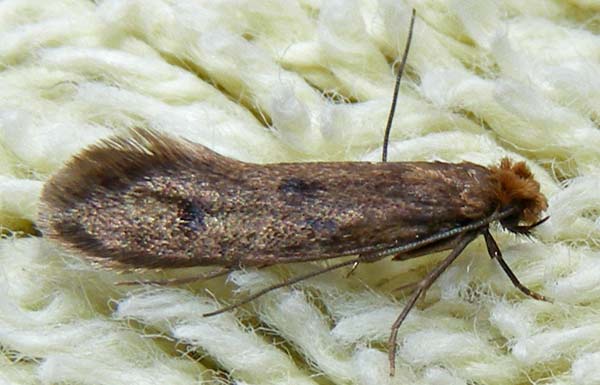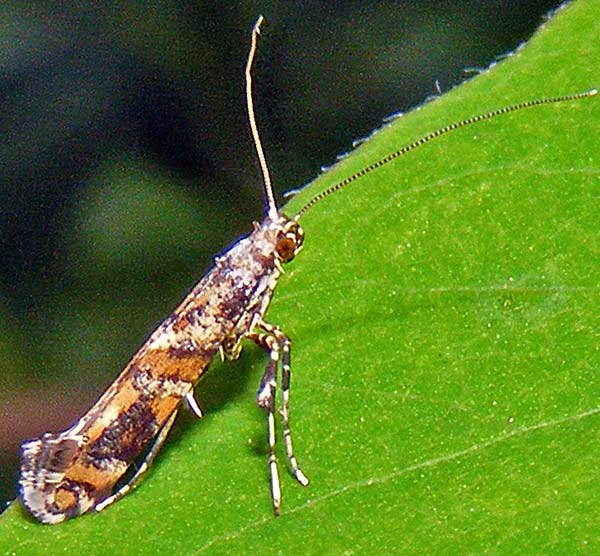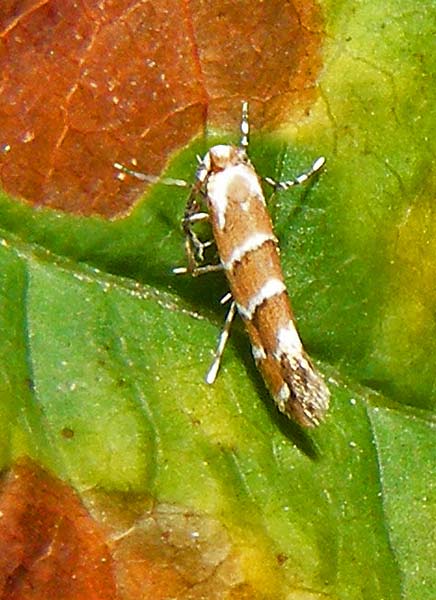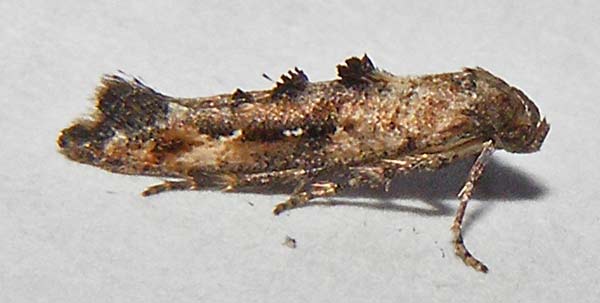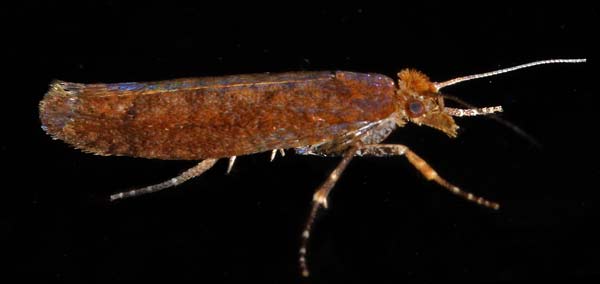Search the site for a moth name or other keyword



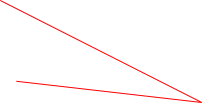
461 Ypsolopha ustella
Flying : recorded throughout the year -
Common
Very variable in colour and wing pattern. Often has a large black spot near the trailing corner of the forewing.
Larva and Pupa
Pupa case
Photo of Gracillaria syringella by Graeme Davis
Photo of Cameraria ohridella
by Graeme Davis
Photo of Epermenia chaerophyllella by Graeme Davis
483 Epermenia chaerophyllella
Flying : Mainly April to October. Winters as an adult so is seen in winter occasionally.
Common

366 Horse Chestnut Leaf-
Flying : April to November but mainly July, August and September
Common. Has spread quickly across Europe, appearing in Britain in 2002 and spreading rapidly

293 Gracillaria syringella
Flying : Mainly April to November
Common
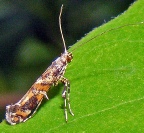
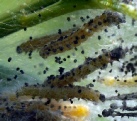
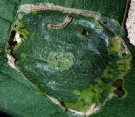
Photo of Luffia ferchaultella pupa by Graeme Davis
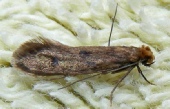
Photo of Case-
240 Case-
Flying : May, June, July, August
Common.
Psychidae
148 Nemophora degeerella
Flying : May, June and early July
Common in England and Wales but not elsewhere.
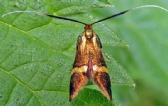


130 Incurvaria masculella
Flying : April, May, June
Common
6 Dyseriocrania subpurpurella (Syn. Eriocrania subpurpurella)
Flying : April to July
Common
Very varied in colour and markings -
4 Micropterix aruncella
Flying : May, June, July
Common
Photo of Nemophora degeerella
by Graeme Davis
Photo of Incurvaria masculella
by Graeme Davis
Opostegidae
Eriocraniidae
Micropterigidae
Photos of Micropterix aruncella by Graeme Davis
Larvae and Pupae For many of these tiny moths the adults are often not seen. For many species we are more familiar with their larvae or pupae than with the adults: for adults of Taleporia tubulosa and Psyche casta (See Hantsmoths)

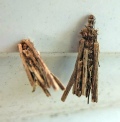
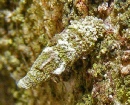

181 Taleporia tubulosa
Male adult flying : Mainly May and June. Flightless female remains in the pupa case.
Larvae and pupae are enclosed in a cigar-
Common in Southern England, the Midlands and East Anglia. Elsewhere local or unrecorded.
185 Luffia ferchaultella
Does not fly. Only the female is known and this is wingless and self-
Larvae
and pupae are enclosed in a case attached to tree bark or a wall or fence.
Common in Southern England, the Midlands, East Anglia and eastern Wales. Elsewhere local or unrecorded.
186 Psyche Casta
Male flying : mainly May, June and July. Female wingless. Larvae and pupae are camouflaged with strips of dead grass.
Common
 NEXT
NEXT
NEXT
NEXT

To see an image click thumbnail ; image can be dragged about by an edge
To compare
this moth with other species click its green ‘Compare’ button
To go to another page
of moths click an arrow for ‘Next’ or ‘Previous’
140 Nematopogon swammerdamella
Flying : Mainly May and June with some in April and July
Common;
Wing length 8-
152 Cauchas rufimitrella
Flying : Mainly May and June with a few in April and July
Common in England and Wales but local in Scotland
196 Morophaga choragella -
Flying : June, July and August
Fairly common only in South and South-
227 Skin Moth Monopis laevigella
Flying : May, June, July, August and September. Common.
228 Monopis weaverella
Flying : May, June, July, August and September. Common.
Differs from M laevigella in having 1. less speckling and
2. A large triangular yellow
mark at the trailing corner of the forewing.
246 Tinea semifulvella
Flying : May, June, July, August and September. Common.
247 Tinea trinotella
Flying : Mainly May, June, July, August with some in April and September.
Common
263 Apple Leaf Miner Lyonetia clerkella
Flying : All the year -
Common
288 Caloptilia stigmatella
Flying : All the year -
Common
294 Aspilapteryx tringipennella
Flying : April to September
Common
300 -
Unfortunately the adults are too alike to separate using photographs.
Their food plants are different and they mine the leaves -
315 -
337 Phyllonorycter hilarella (Food plant Goat Willow)
Flying : May to September
Common but so tiny it may be overlooked -
342 Nut Leaf Blister Moth Phyllonorycter coryli (Food plant Hazel)
Flying : May to November
Common but so tiny it may be overlooked -
385 Common Nettle-
Flying : All the year -
Common
There is another similar moth, Choreutis pariana, which is less common and does not
have the white zigzag cross-
396 Glyphipterix fuscoviridella
Flying : May and June -
Common in Southern England, the Midlands and Wales -
There are eight species of genus Yponomeuta in Britain, all with similar markings
-
424 Bird-
Flying : Mainly June, July and August with some in May and September.
Common. Many are probably immigrants -
427 Spindle Ermine Yponomeuta cagnagella
Flying : Mainly July and August with some in May, June and September.
Common in Southern England, the Midlands and Wales -
Larval webs often cover spindle bushes in the hedgerow.
436 Pseudoswammerdamia combinella
Flying : Mainly May and June with some in April, May and August
Common in Southern England, the Midlands and Wales -
453 Honeysuckle Moth Ypsolopha dentella
Flying : May to September
Common
455 Ypsolopha scabrella
Flying : July, August and September
Common in England and Wales except in the West. Not common in Scotland.
462 Ypsolopha sequella
Flying : Mainly July, August, September with some in May, June and October.
Common in England and Wales
464 Diamond-
Flying : May be seen all year -
A common immigrant -
465 Plutella porrectella
Flying : May to October
Fairly common. Very similar to Diamond-
It is generally considered that most of the genus Coleophera are too similar to distinguish
from photographs. The one shown -
544 Coleophora albicosta
Flying : May, June and July
Common




1. Micromoths including the Tineidae, Gracillariidae and Yponomeutidae
Adelidae
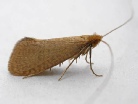

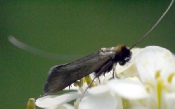
Tineidae





Gracillariidae
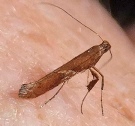
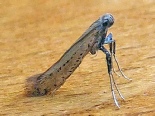
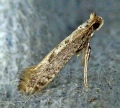
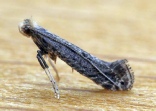


Choreutidae
Glyphipterigidae


Yponomeutidae



Coleophoridae



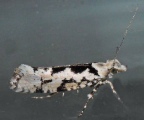

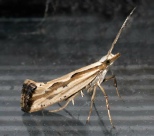



Ypsolophidae
